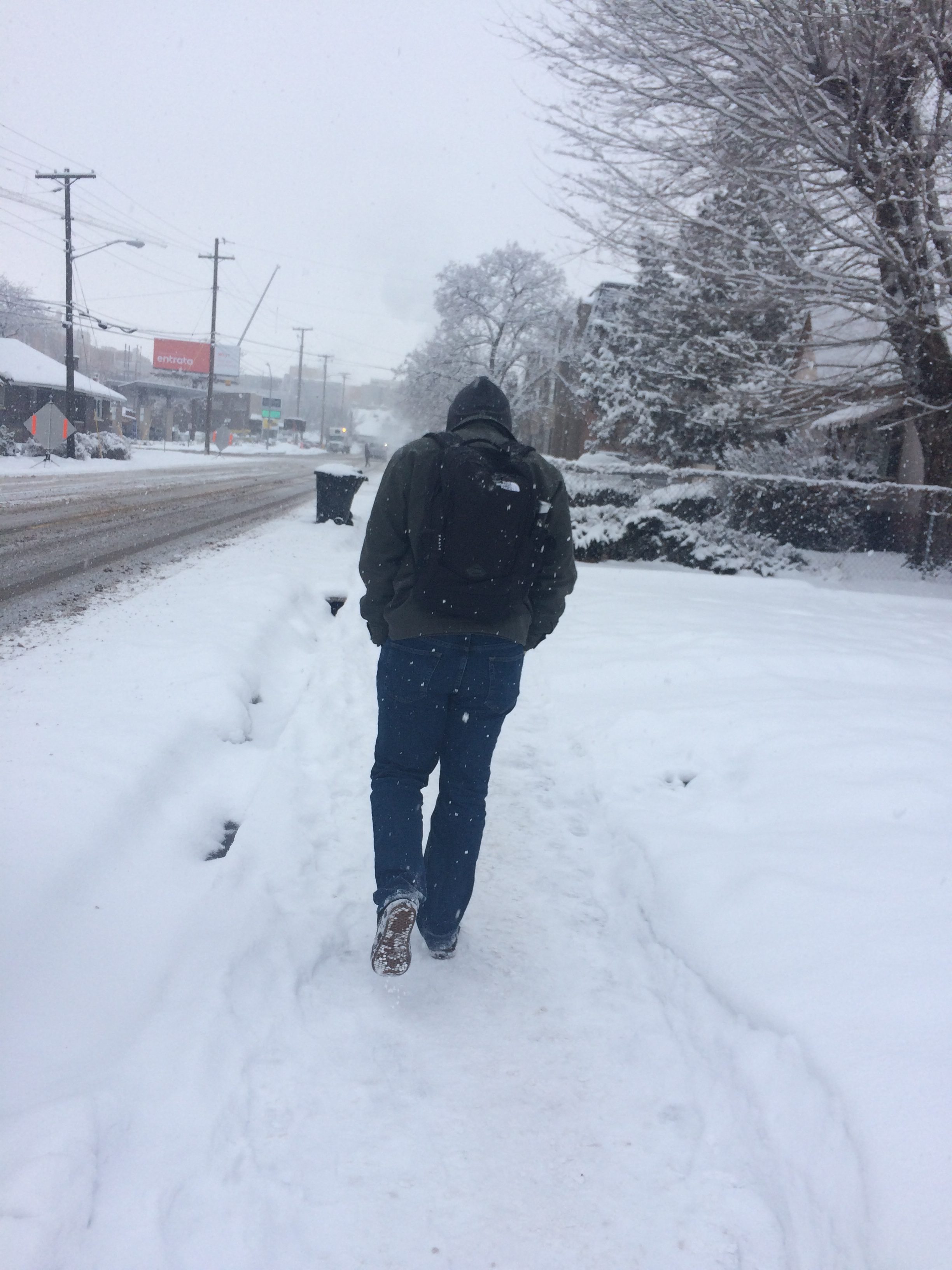
A large percentage of BYU students who come from warmer climates like California, Texas and Arizona and have never driven in the ice or snow. For some students, this is a cause for concern.
“It doesn’t really get too snowy there,” BYU student and Virginia native Andrew Justice, said of his home state. “This is my third year at BYU, but my first year driving in the snow. My freshman year I didn’t have a car, and last winter my car was broken.”
Justice was driving south of the Tanner Building on Monday night when he lost control and his car started sliding.
Despite his slow driving, his car nearly slid off the road.
“I’m always bad with what you’re supposed to do,” Justice said. “I know you’re supposed to turn into the slide, but that seemed like a bad idea.”

Justice stayed where he was with his foot on the brake. A man eventually came to help Justice and pushed his car back on the road.
Sixteen percent of crashes in Utah during 2015 happened during inclement weather, according to Utah Crash Summaries.
The Utah Department of Public Safety created a website to educate people on how to drive safely in the snow. The website gives these 20 tips to stay in control on the road:
- Slow down. People driving too fast is the main cause of crashes in winter.
- Drive under the speed limit. The posted speed limit is for dry, ideal conditions. If it’s wet, snowy or icy, you should be going under the speed limit.
- Avoid quick stops, starts and turns. Accelerate slowly, brake gently and don’t turn quickly.
- Increase your following distance. It takes longer to safely stop when it’s wet, snowy and icy.
- Use extra caution when changing lanes. Snow and slush can form ridges between lanes that can be slippery and cause drivers to lose control. Avoid them if at all possible.
- Always buckle up. Crash risk increases in bad weather. Seatbelts save lives.
- Coats can interfere with car seat fit. Place coats or blankets around children after the harness is snug and secure.
- Four-wheel-drive and all-wheel-drive don’t make you invincible. They help with traction, but they don’t help with stopping and turning. They can create a false sense of security.
- Watch for black ice. Black ice looks more like a wet spot than a patch of ice and causes many crashes.
- Bridges freeze first. Use extra caution on bridges — the road on either side may just be wet, but the bridge may be icy.
- The road behind an active snow plow is safer to drive on. If you find yourself behind a snow plow, stay behind it and use extreme caution if you pass. Never pass on the right.
- If you skid, ease off the gas and turn into the skid. If you start skidding, ease off the gas and steer in the direction the back of your car is going. Do not slam on the brakes.
- Clear snow and ice for visibility. Clear all frost and snow from your windows, headlights, brake lights and signals.
- Snow left on your car can be hazardous. If it hardens, it can fly off and cause damage.
- Don’t use cruise control. Road surfaces and conditions are constantly changing — the driver needs to be in full control.
- Watch for deer. They can be more active after storms.
- Keep your gas tank close to full. If you get stuck in a traffic jam or snow, you might need more fuel than you anticipated to get home or to keep warm.
- Dress for the weather. Flip flops and shorts won’t keep a stranded driver warm.
- Give yourself more time. Traffic will likely be moving slower and rushing increases the risk of crashing.
- Stay home if you really don’t need to go anywhere. If a trip isn’t essential, enjoy the snow with a warm fire and a good book, or binge-watch your favorite show.

The website also emphasizes the importance of being prepared.
BYU sophomore Haley Smith was driving on I-15 one night at 11:30 p.m. when her car ran out of gas.
Smith said she pulled over right before an exit and called AAA.
“My gas gauge does not properly work, and I thought I had 20 more miles,” Smith said.
As Smith and her boyfriend were waiting for AAA, a man pulled over to help. He had a container of gas with him. Smith said she was very grateful.
“It was really cold; I was really glad he came to help,” Smith said. “We didn’t have a blanket in the car or anything.”
Smith also said she avoids driving to the BYU campus, and knows a lot of people who do the same.
“I would much rather walk than deal with the ice and snow,” Smith said.




